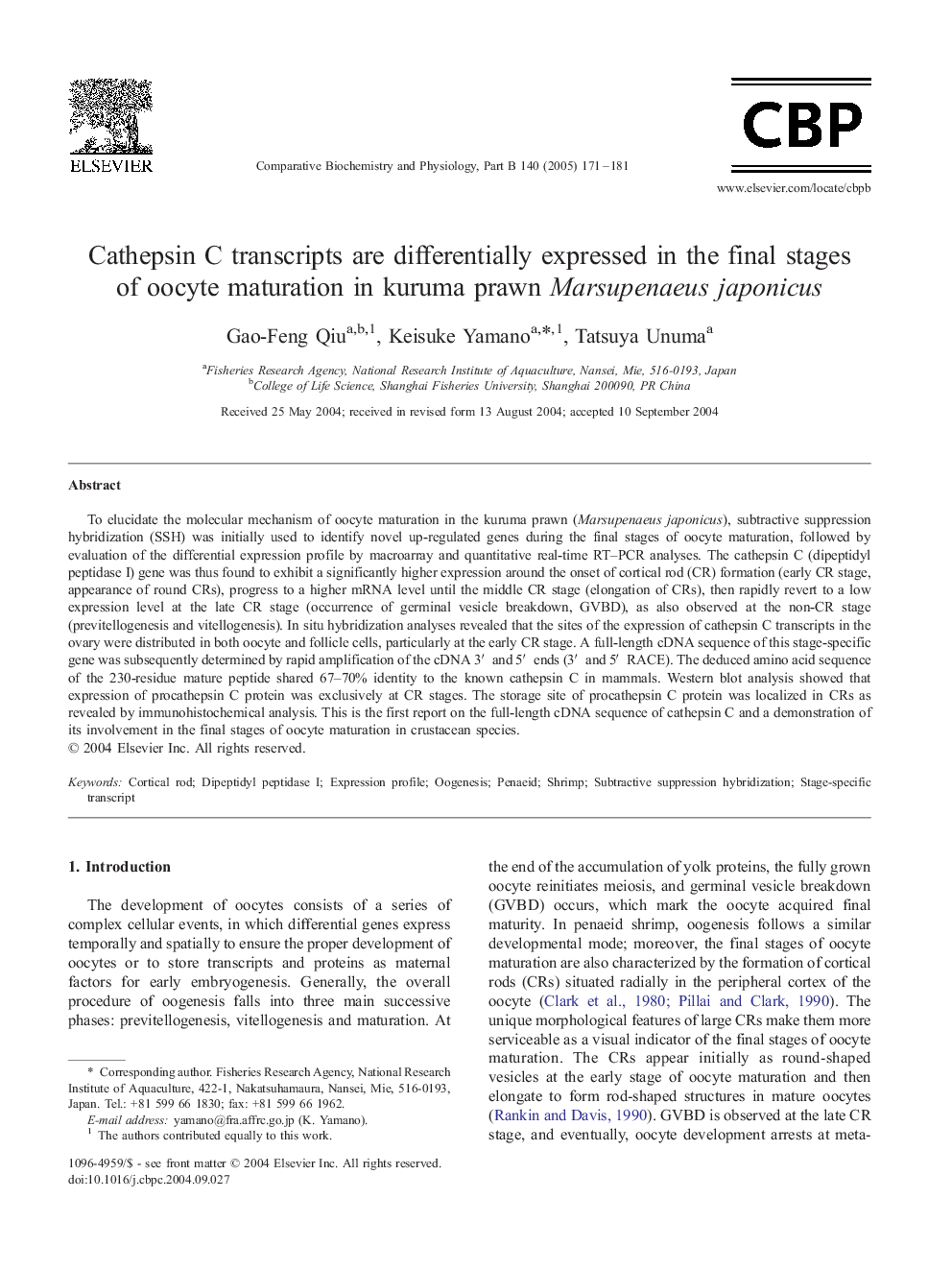| Article ID | Journal | Published Year | Pages | File Type |
|---|---|---|---|---|
| 10820688 | Comparative Biochemistry and Physiology Part B: Biochemistry and Molecular Biology | 2005 | 11 Pages |
Abstract
To elucidate the molecular mechanism of oocyte maturation in the kuruma prawn (Marsupenaeus japonicus), subtractive suppression hybridization (SSH) was initially used to identify novel up-regulated genes during the final stages of oocyte maturation, followed by evaluation of the differential expression profile by macroarray and quantitative real-time RT-PCR analyses. The cathepsin C (dipeptidyl peptidase I) gene was thus found to exhibit a significantly higher expression around the onset of cortical rod (CR) formation (early CR stage, appearance of round CRs), progress to a higher mRNA level until the middle CR stage (elongation of CRs), then rapidly revert to a low expression level at the late CR stage (occurrence of germinal vesicle breakdown, GVBD), as also observed at the non-CR stage (previtellogenesis and vitellogenesis). In situ hybridization analyses revealed that the sites of the expression of cathepsin C transcripts in the ovary were distributed in both oocyte and follicle cells, particularly at the early CR stage. A full-length cDNA sequence of this stage-specific gene was subsequently determined by rapid amplification of the cDNA 3â² and 5â² ends (3â² and 5â² RACE). The deduced amino acid sequence of the 230-residue mature peptide shared 67-70% identity to the known cathepsin C in mammals. Western blot analysis showed that expression of procathepsin C protein was exclusively at CR stages. The storage site of procathepsin C protein was localized in CRs as revealed by immunohistochemical analysis. This is the first report on the full-length cDNA sequence of cathepsin C and a demonstration of its involvement in the final stages of oocyte maturation in crustacean species.
Keywords
Related Topics
Life Sciences
Biochemistry, Genetics and Molecular Biology
Biochemistry
Authors
Gao-Feng Qiu, Keisuke Yamano, Tatsuya Unuma,
